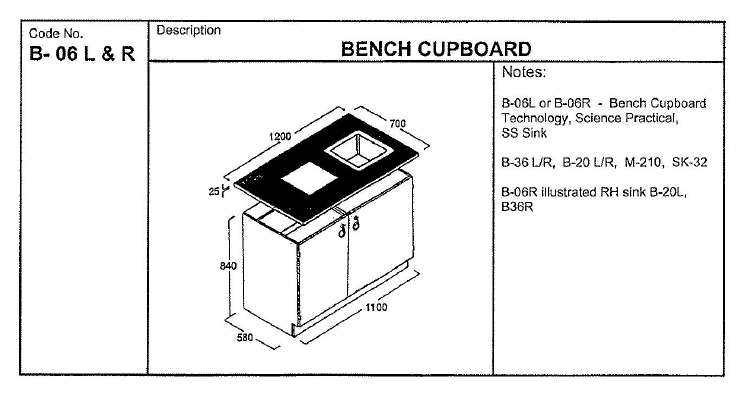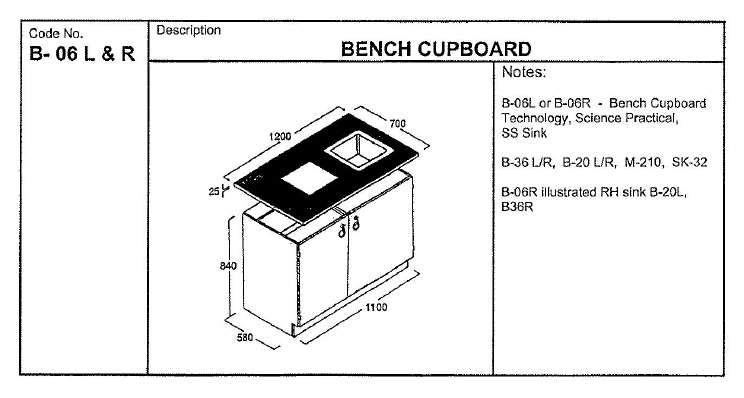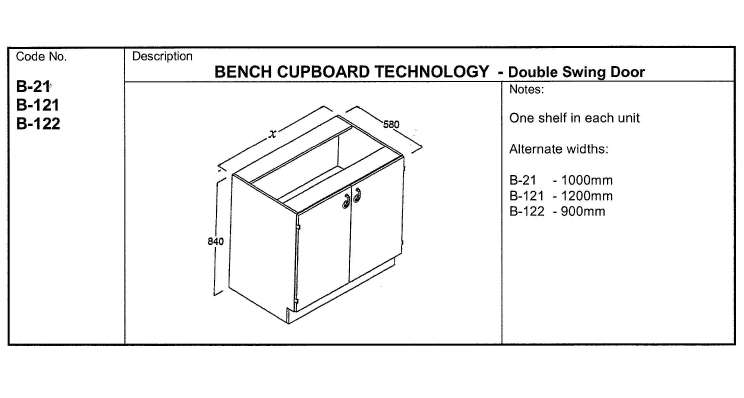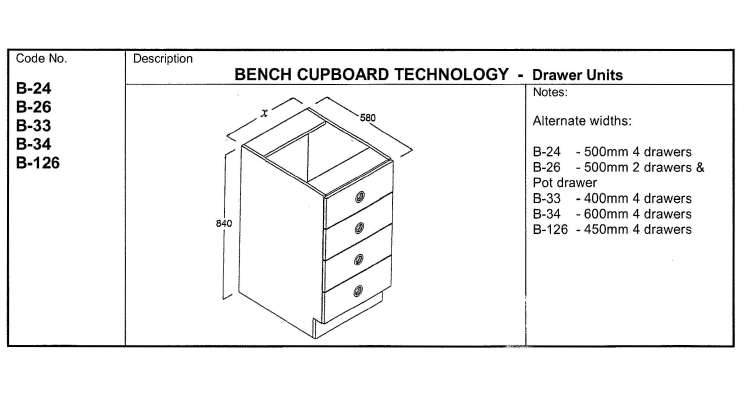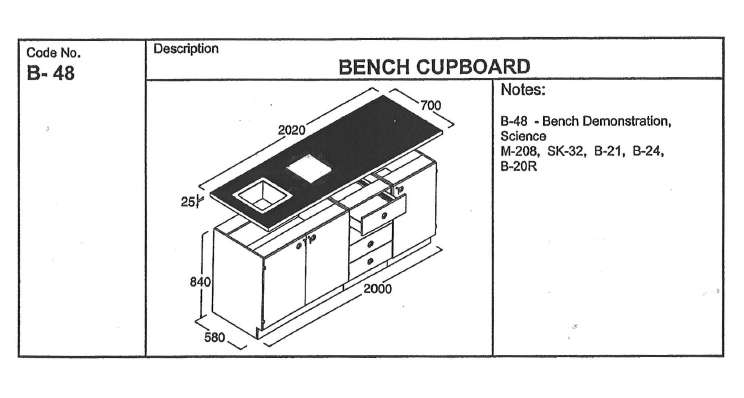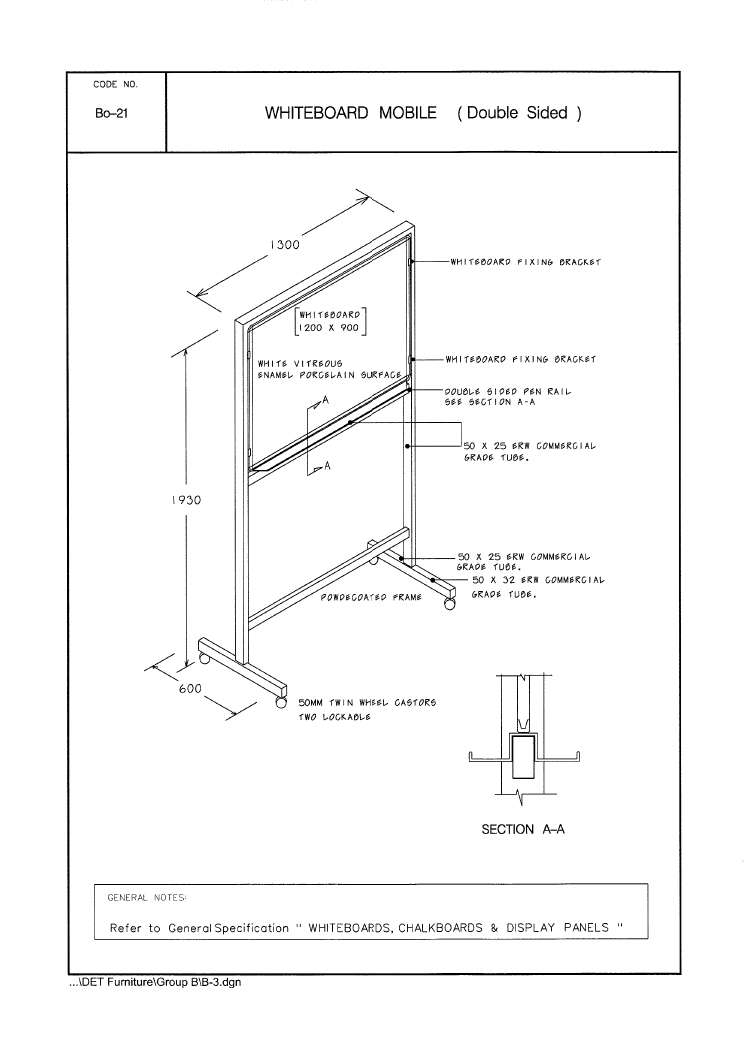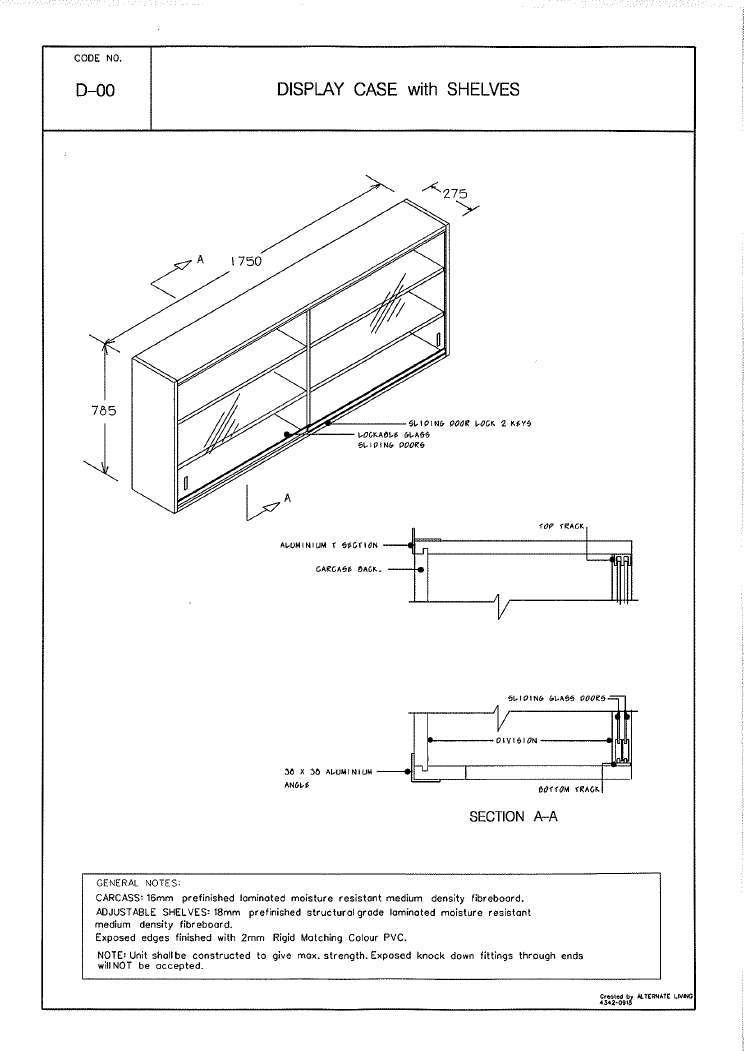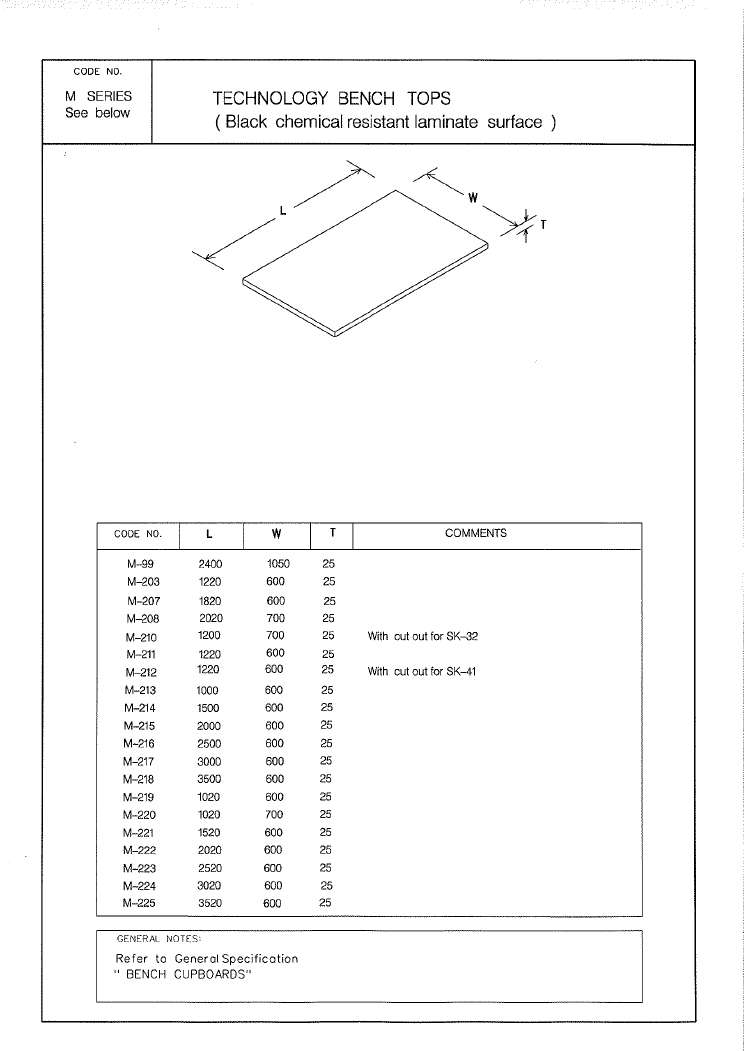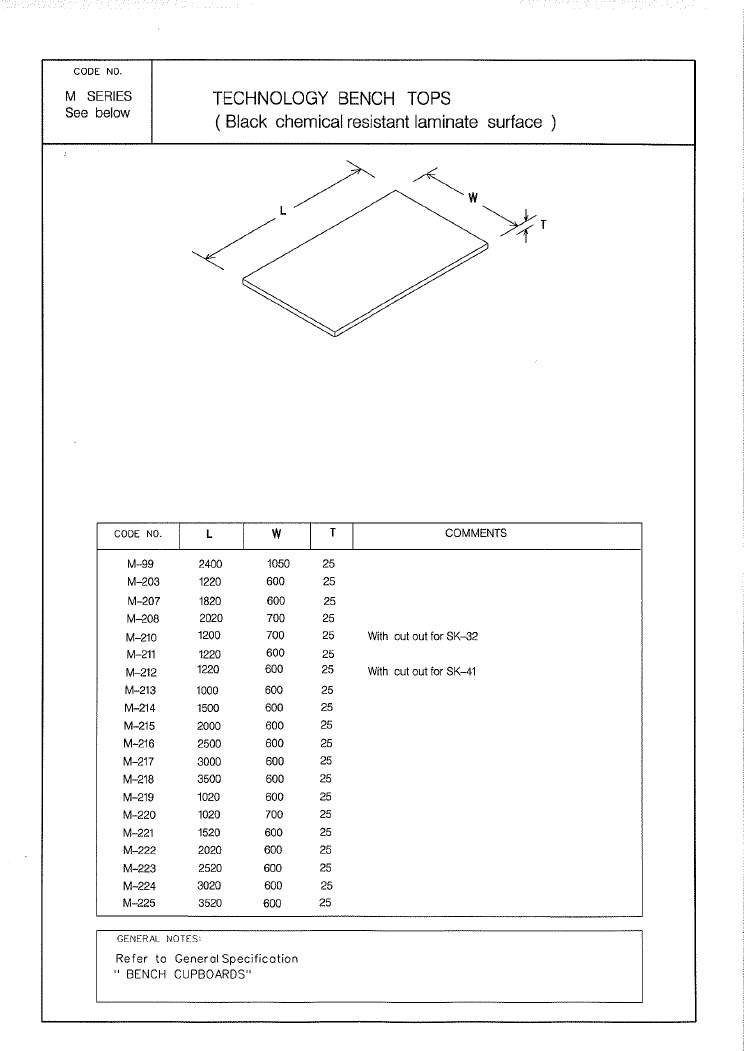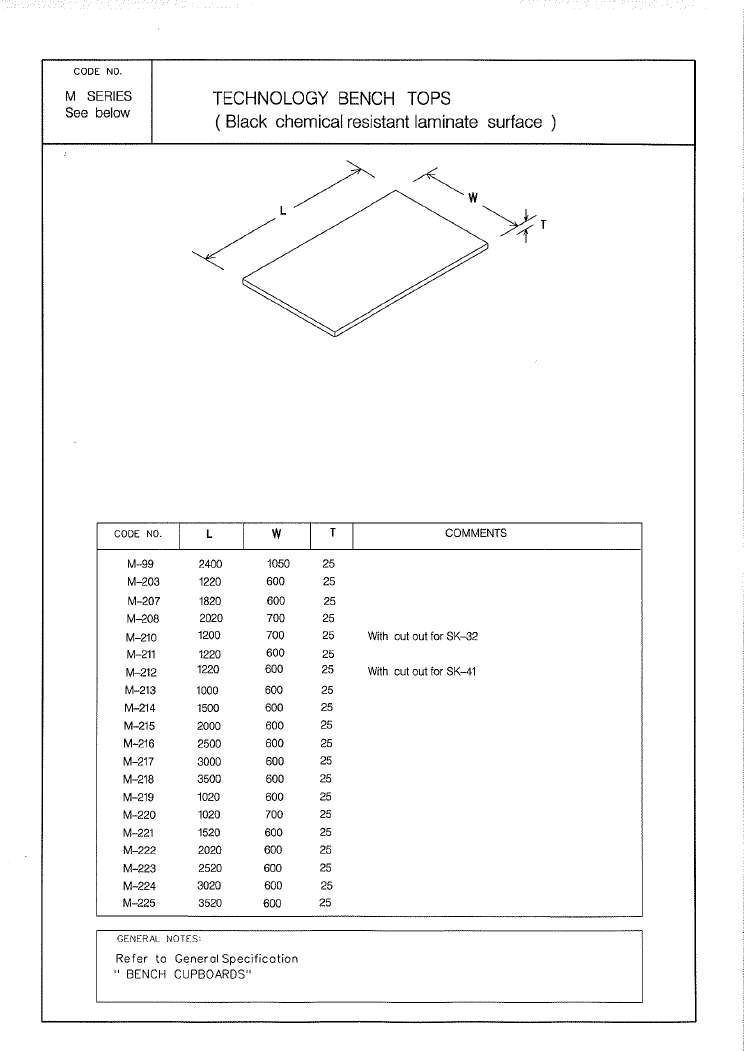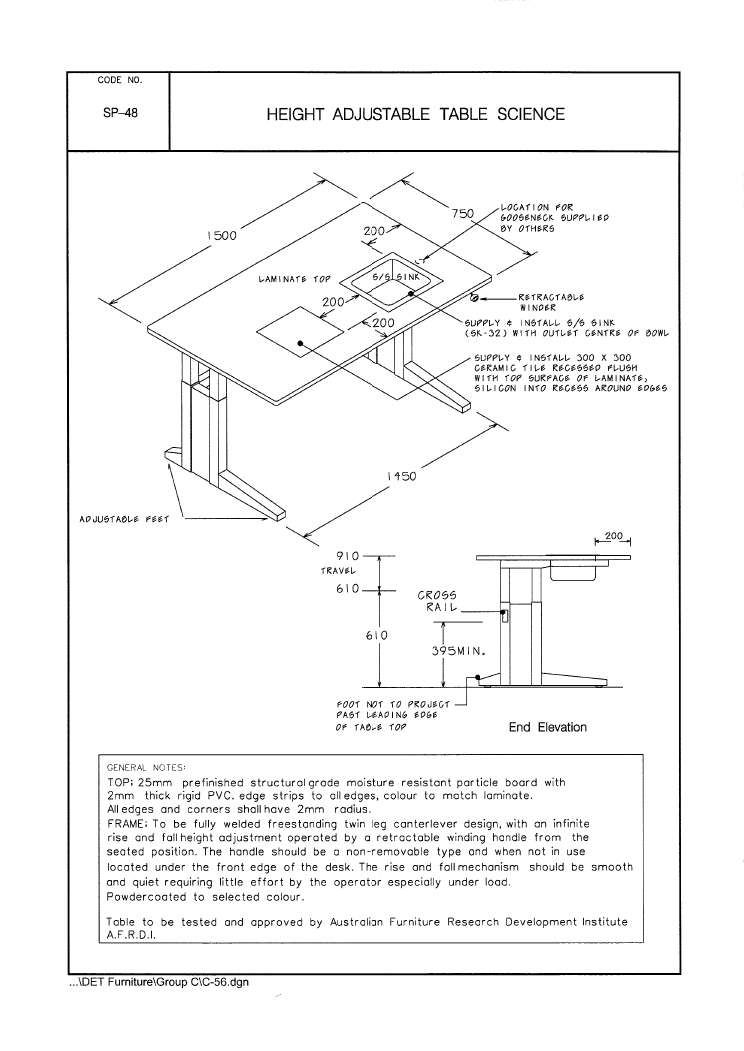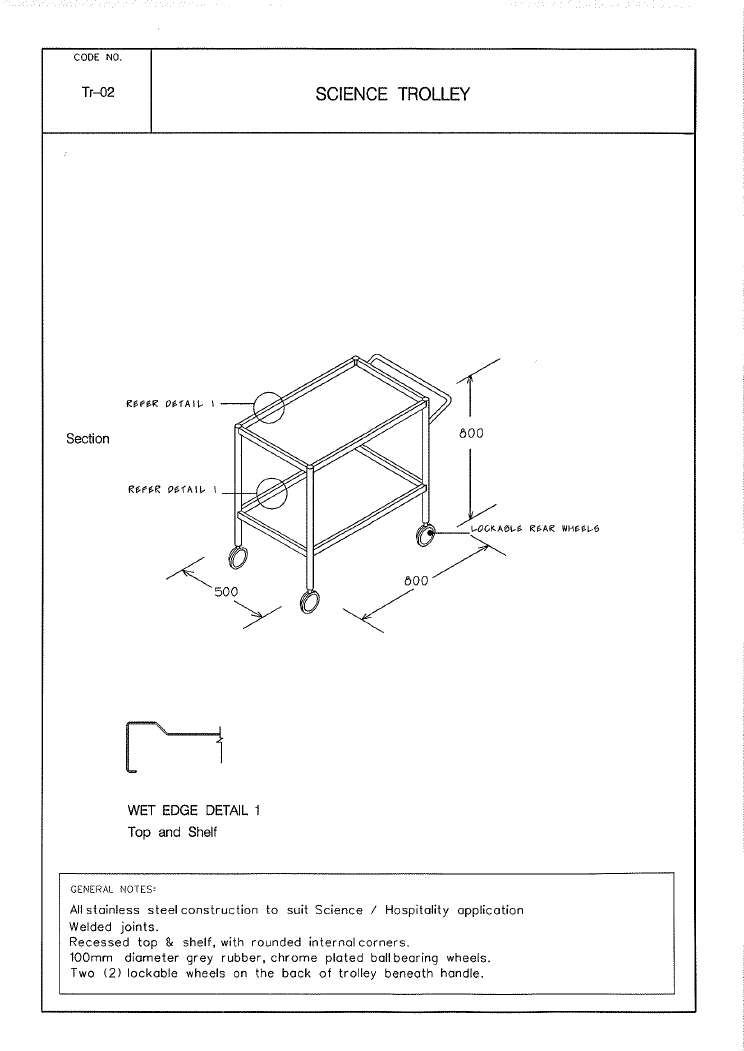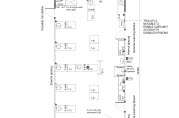This laboratory provides a learning space for up to 26 students and one teacher or additional students and two teachers. Students complete science related learning experiences and practice the routines and procedures necessary to do this safely. Fixed workstations and services are complemented by movable extension tables enabling teachers to develop a variety of working groups from individual to large groups. This laboratory is designed to support explore, investigate and create, fabricate and construct activities. The mandatory relationship with two General Learning Spaces separates the function of the specialised science facilities from general learning activities thus creating greater availability and more use of the specialist equipment.
FURTHER OPPORTUNITIES
Connecting the adjoining General Learning Spaces would enable greater diversity of learning settings and learning activities. Access to an outside learning area from the laboratory would expand the nature and type of investigative activities that can be conducted. The inclusion of a glass sliding door to the adjacent General Learning Spaces would create ease of flow and greater access between learning spaces and the adjacent laboratory.
LEARNING IMPLICATIONS
Given the size of the room consideration will need to be given to active supervision. Shared use, fixed services and the size of the room do not generally support explicit teaching, reflect, research and record activities. Student work samples can be displayed but consideration will need to be given to the type of work sample, the display technique and equipment being used in learning activities. Given that the space is shared by two General Learning Spaces, negotiation of use between teachers and students will be required and consideration will need to be given to the acoustic and spatial layout demands of activities being conducted at the same time
Explore ideas, share and develop opinions, debate and decide.
This learning process is effective with small to large groups provided specific criteria can be met.
Display, exchange and encounter learning artefacts.
This learning process is effective with small to very large groups provided specific criteria can be met.
Teachers and/or students demonstrate, communicate ideas and/or teach explicitly.
This learning process is effective with small to very large groups provided specific criteria can be met.
Hands on interaction, experimentation and evaluation with materials to discover, design and test.
This learning process is effective with small to very large groups provided specific criteria can be met.
Implement, build or assemble systems and media.
This learning process is effective with small to very large groups provided specific criteria can be met.
Use written, graphical and digital resources to personally reflect, consolidate and/or enquire.
This learning process is for individual or small groups and is effective provided specific criteria can be met.
Practise, refine and execute performance based activity.
This learning process is effective with small to very large groups provided specific criteria can be met.
Ratings against the Design Criteria
All criteria regarding spatial layout, fit-out, visibility and acoustics can be met.
Most criteria regarding spatial layout, fit-out, visibility and acoustics can be met. Some consideration will need to be given to determine whether constraints on ease of use, group size or materials will compromise the learning outcomes.
Few of the criteria regarding spatial layout, fit-out, visibility and acoustics can be met. A lot of consideration will need to be given to determine how the constraints on ease of use, group size or materials can be overcome.
Very few of the criteria regarding spatial layout, fit-out, visibility and acoustics can be met. This space should only be used for this learning mode as a last resort.
This space is incapable of supporting this learning mode.
This learning process is not employed with this size group.



